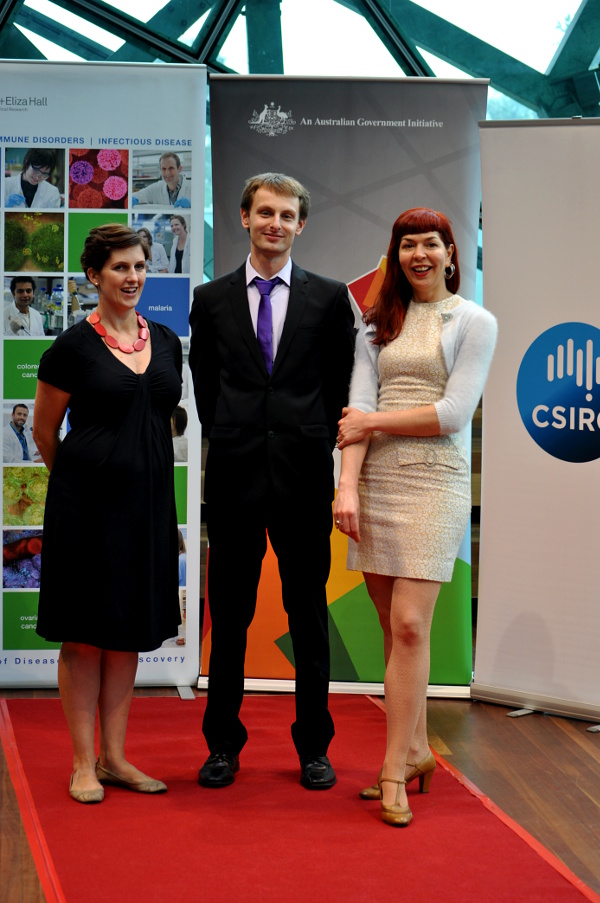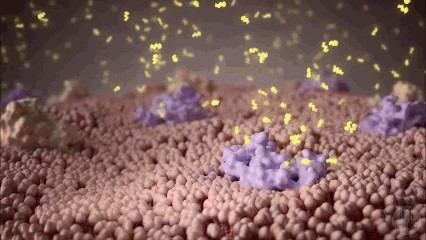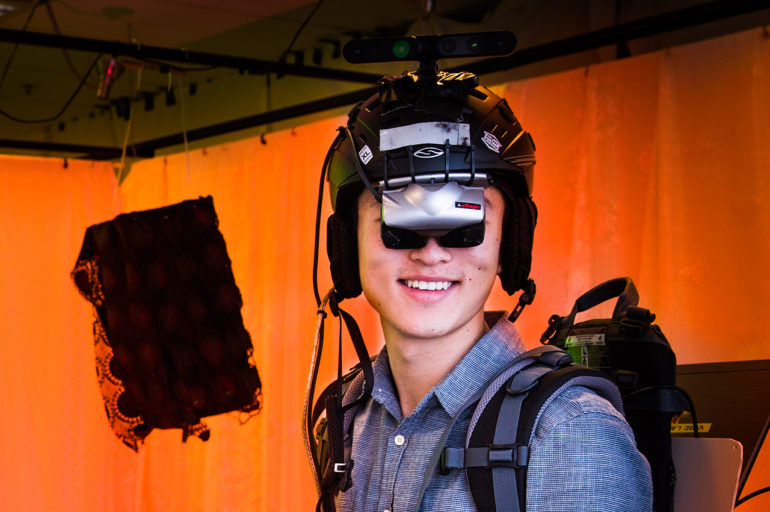It’s often hard to understand what’s happening inside us, because the processes and phenomena that influence our bodies and impact our health are invisible.
Not being able to understand why we’re sick or why our body is acting the way it does can add to the stress and strain of illness.
But now, a new generation of movie makers are drawing back the curtain, revealing the hidden secrets of our marvellous biology and setting new standards for communicating biological science to the world.
VIZBIplus red carpet at Fed Square, April 2014
Animators Kate Patterson, Chris Hammang and Maja Divjak on the red carpet.
Three spectacular new biomedical animations were premiered today during a red carpet event at Federation Square in Melbourne.
The molecular movies bring to life some very complex processes, researched by health researchers and detailed in scientific journals most of us never see. They showcase the work of VIZBIplus – Visualising the Future of Biomedicine, a project that is helping to make the invisible visible, so that unseen bodily processes are easier to understand, which will help us make better choices about our health and lifestyle.
With BAFTA and Emmy award winning biomedical animator Drew Berry as mentor, three talented scientific animators – Kate Patterson (Garvan Institute of Medical Research), Chris Hammang (CSIRO) and Maja Divjak (Walter and Eliza Hall Institute of Medical Research) – have created biomedically accurate animations, showing what actually happens in our bodies at the micro scale.
The animators used the same or similar technology as Dreamworks and Pixar Animation Studios, as well as video game creators, to paint mesmerising magnifications of our interior molecular landscapes. While fantastic, the animations are not fantasies. They are well-researched 3D representations of cutting-edge biomedical research.
Kate Patterson’s animation shows that cancer is not a single disease. She highlights the role of the tumour suppressor protein p53, known as ‘the guardian of the cell’, in the formation of many cancer types.
Chris Hammang’s animation describes how starch gets broken down in the gut. It is based on our very own health research about resistant starch, a type of dietary fibre found in foods like beans and legumes that protects against colorectal cancer – one of Australia’s biggest killers. Chris shows us the ‘why’ behind advice to change our dietary habits.
Hungry Microbiome butyrate GIF, CSIRO
‘The Hungry Microbiome’ animates how resistant starch works in our bodies.
Maja Divjak’s animation highlights how diseases associated with inflammation, such as type 2 diabetes, are ‘lifestyle’ diseases that represent some of the greatest health threats of the 21st century.
With our current ‘YouTube generation’ opting to watch rather than read, biomedical animations will play a key role in revealing the mysteries of science. These videos will allow researchers to communicate the exciting and complex advances in medicine that can’t be seen by the naked eye.
Watch all the videos here and be among the first to see these amazing visualisations!




10th April 2014 at 5:29 pm
How fascinating. Watching as opposed to reading is much easier for the layman.